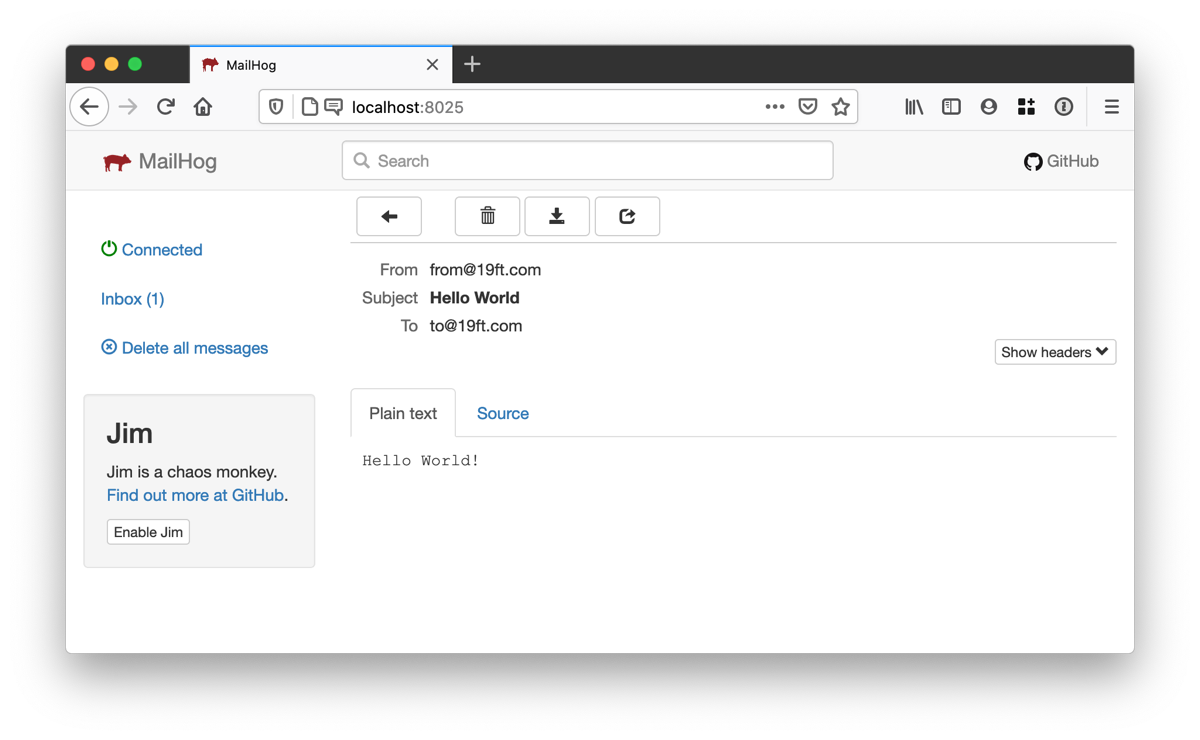Using MailHog via Docker for testing email
I recently needed to modify the emails that a client project sends out. It was set up to send via SMTP and so the easiest way to do this for me was to add a local MailHog instance and point the application at it.
Manually running via Docker
The quickest and easiest way to do this is via Docker.
Manually, we can do:
$ docker run -p 8025:8025 -p 1025:1025 mailhog/mailhog
This will run MailHog with the SMTP port exposed on localhost port 1025 and the web interface on 8025.
Now you can configure the app’s SMTP config and away you go.
Test via telnet
You can test via telnet fairly easily if you have it installed:
$ telnet localhost 1025
EHLO 19ft.com
MAIL FROM:
RCPT TO:
DATA
Subject: Hello World
Hello World!
.
QUIT
Type each line out and press Enter between each one and you’ll see the new email in MailHog’s web interface:

Docker compose
As I already had a Docker Compose setup for this project, I added the following to my docker-compose.yml:
services:
mailhog:
image: mailhog/mailhog
logging:
driver: 'none' # disable saving logs
ports:
- 1025:1025 # smtp server
- 8025:8025 # web ui
MailHog’s logs are quite chatty, so adding driver: 'none' to the logging section will turn them off if you don’t need them.
Done
That’s it. I used to use Mailcatcher and still do on one project, but MailHog’s Docker container makes it much easier and quicker to set up.



FWIW, Mailcatcher has a Docker image that I use all the time: jeanberu/mailcatcher
thx =)
Thanks, again, for sharing this post, Rob. I'm using Mailhog, again, in a project and this was perfect. Not too much. Not too little.